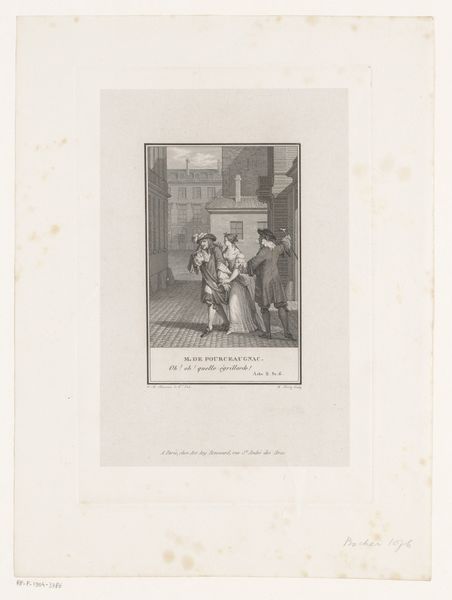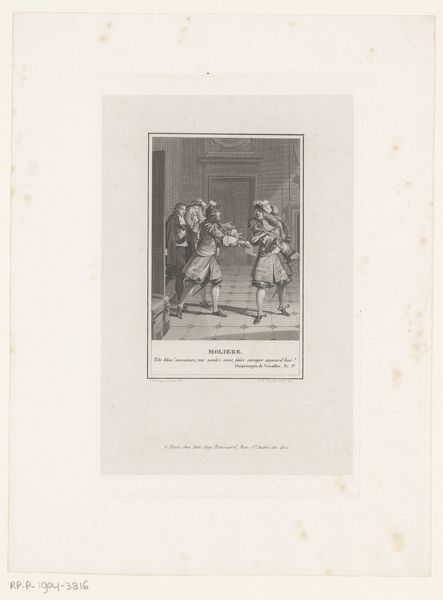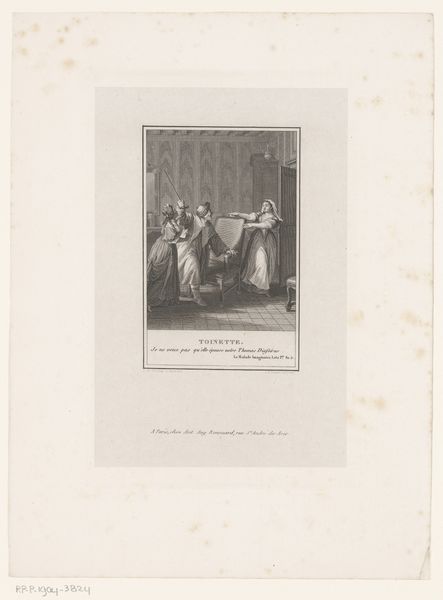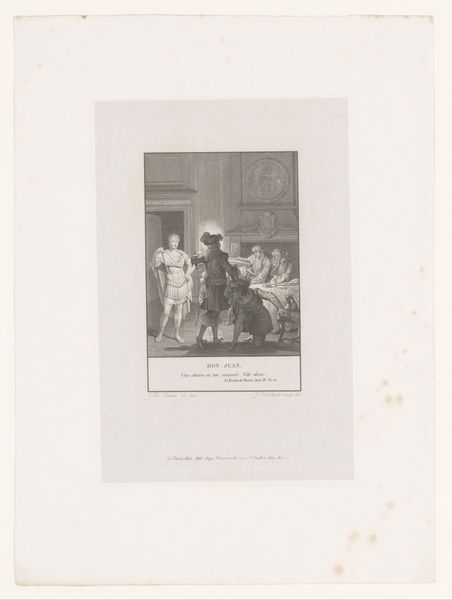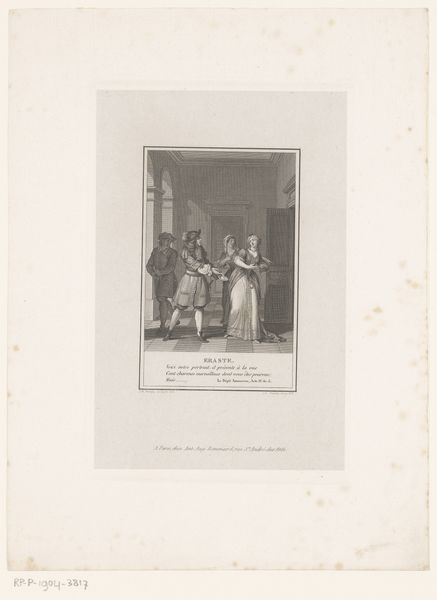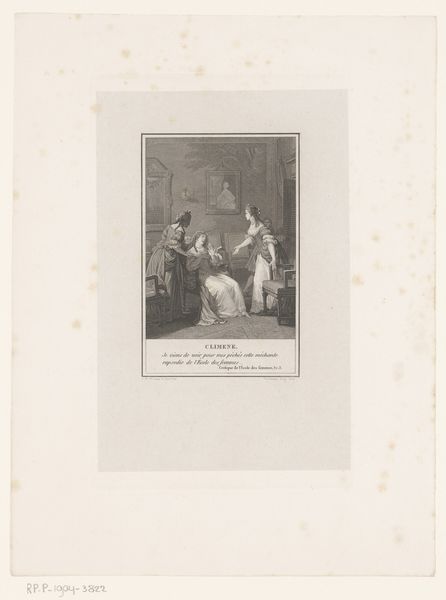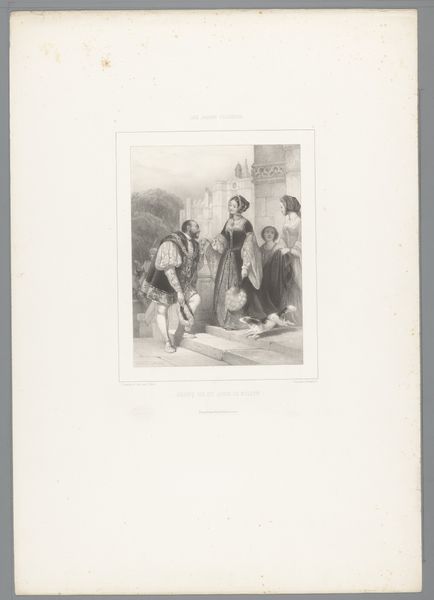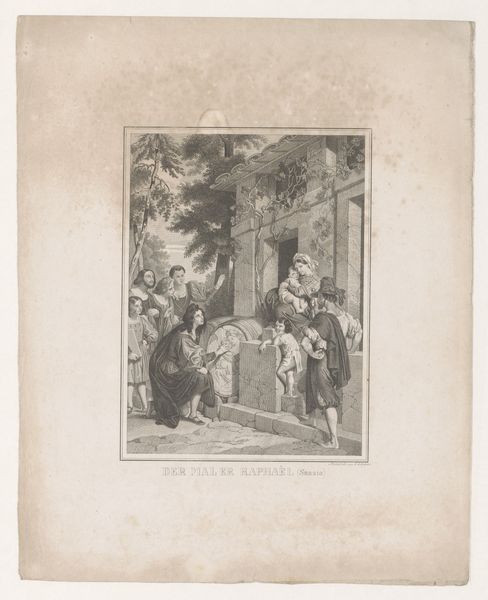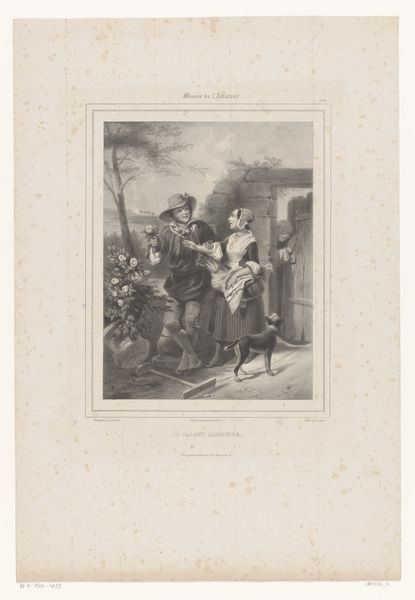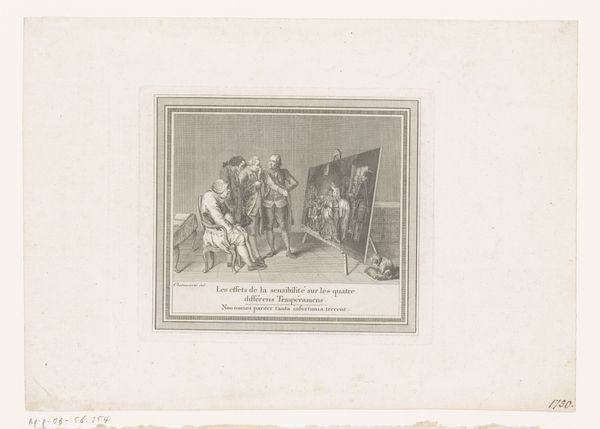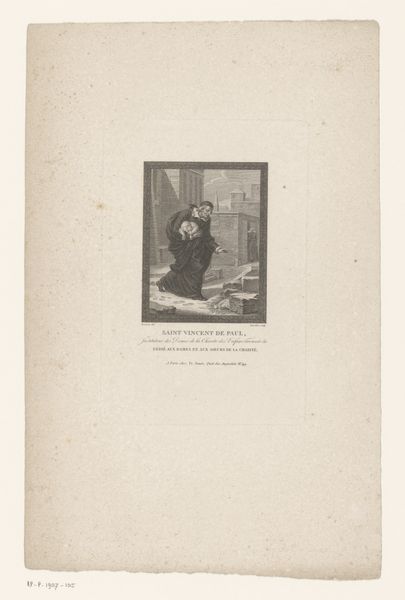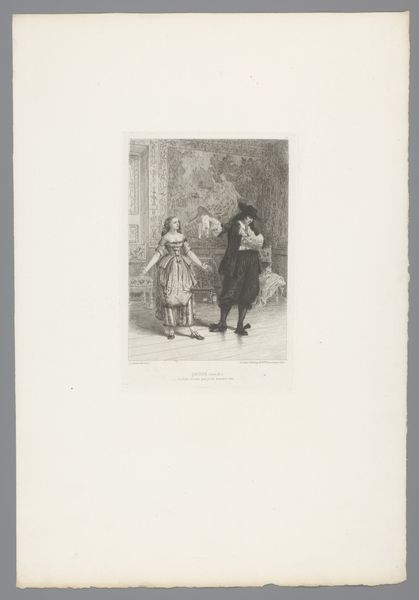
drawing, print, engraving
#
drawing
#
neoclacissism
#
narrative-art
# print
#
history-painting
#
academic-art
#
engraving
Dimensions: height 220 mm, width 149 mm
Copyright: Rijks Museum: Open Domain
Curator: Look at this print; Louis Croutelle created "Alcide met opgeheven stok voor Sganarelle" sometime between 1811 and 1813, rendered in engraving. It certainly seems to evoke the aesthetic ideals of Neoclassicism and academic art, doesn't it? Editor: My first impression is one of anticipation, a tense pause before some sort of theatrical outburst. The body language—the raised stick, the recoiling figure—it's all charged with unspoken narrative. Curator: It absolutely draws us into a story. Considering Croutelle worked during a period of significant social upheaval and political realignment in France, this portrayal—likely from a Moliere play, I imagine—resonates. Power dynamics are at play, especially focusing on social class and its performance on stage. Editor: Visually, I am particularly drawn to how Croutelle uses light and shadow to define not only the figures, but the dramatic space. It directs the eye to key elements – the threatening stick, the gesture of fear. I wonder if these were common visual symbols of violence, then? Curator: The linear precision—characteristic of engravings—adds a certain formality. The architectural backdrop—a narrow Parisian street—emphasizes the controlled chaos enacted between these characters. This scene feels purposefully staged, reinforcing societal roles being put on display. Editor: I notice, too, how Alcide's costume almost merges with the architecture; the clean lines mirror each other while Sganarelle seems to visually break from these sharp angles and patterns through gesture and flowing costume. Are we meant to align with one perspective or the other? Or, rather, is it about this fraught space of power in between? Curator: It encourages a discussion about these imposed narratives, how they perpetuate certain ideologies, and who is being excluded from that particular, academic, classical conversation. Croutelle’s depiction allows for examination into these power imbalances, reflected, I think, within these two figures. Editor: Thinking of cultural memory—this feels akin to the kind of moral tales you might see play out through classical painting; there's something universal in the drama depicted here, rendered across time, culture, and class, regardless of where one stands in the theatrical setting, don’t you think? Curator: Indeed. This work pushes us to analyze these timeless struggles—and their ramifications across generations. Editor: Well, for me it ignites the idea of storytelling itself, the timeless themes within them.
Comments
No comments
Be the first to comment and join the conversation on the ultimate creative platform.
